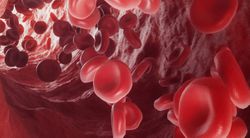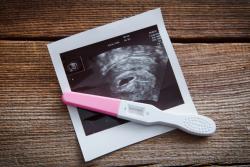- About
- Advertise / Support
- Contact
- CancerNetwork.com
- TargetedOnc.com
- OncLive.com
- OncNursingNews.com
- Terms & Conditions
- Privacy
- Do Not Sell My Information
© 2024 MJH Life Sciences™ and CURE - Oncology & Cancer News for Patients & Caregivers. All rights reserved.
Gut Microbiota Differs in Patients With MPNs
Ashley Chan, assistant editor for CURE®, has been with MJH Life Sciences since June 2023. She graduated with a B.A. in Communication Studies from Rowan University. Outside of work, Ashley enjoys spending time with family and friends, reading new novels by Asian American authors, and working on the manuscript of her New Adult novel.
Patients with MPNs who are JAK2V617F- and CALR-positive had different bacterial compositions compared with people without MPNs, research found.
The gut microbiota in patients with myeloproliferative neoplasms (MPNs) showed a significant difference compared with healthy controls (HCs), according to a study published in the European Journal of Haematology, although patients with MPNs who have a specific driver mutation had a similar bacterial composition compared with HCs.
In particular, MPNs, including essential thrombocythemia (ET), polycythemia vera (PV), pre-fibrotic myelofibrosis (pre-PMF) and primary myelofibrosis, have driver mutations, such as JAK2V617F, JAK2 exon, MPL or Calreticulin (CALR). Researchers found that patients with MPNs who are CALR-positive had the highest resemblance to HCs.
The study demonstrated that patients with MPNs have changes in the gut microbiota, which may be caused by their disease, which may include inflammation. This change in the microbiota has been shown to initiate and progress the disease, according to the study. Researchers also noted that the gut microbiota also affects the immune system, infection control and steady production of blood cells.
MPN is a type of disease that occurs when the bone marrow produces too many red blood cells, platelets and specific kinds of white blood cells, as the National Cancer Institute defines.
The disease may worsen over time as the excess cells build up in the blood or the bone marrow, the National Cancer Institute states, which may cause symptoms such as bleeding problems, anemia, infections and fatigue, among other signs and side effects.
“It could be speculated whether the different JAK2V617F/CALR microbiota profiles are due to different inflammatory profiles of the diseases, or the microbiota in itself participates in creating the inflammatory environment,” wrote the study authors.
Researchers included 227 patients with MPNs; 177 had their disease driven by JAK2V617F, while 30 had CALR mutations. Disease subtypes were as follows: ET (54 patients), PV (114 patients), pre-PMF (13 patients) and MF (46 patients).
The researchers also included 42 HCs. Patients with MPNs were slightly younger than the HC, of which the median ages were 68 and 71, respectively.
The study evaluated the gut microbiome diversity (amount of each bacteria from every bacterial species present) in patients and HCs, in which researchers established that the median observed richness was found to be higher in patients with MPNs, versus HCs.
However, researchers noted that the median observed richness only differed between patients with ET and HCs and did not differ among patients with PV and MF, compared with HCs.
Of note, researchers found that the bacterial composition significantly differed between patients with ET and MF, when comparing patients with ET, PV and MF who were JAK2V617F-positive to HCs. They also reported that the differences between patients with ET and MF still remained different from the HCs.
In terms of specific types of gut bacteria, the researchers determined that patients with MPNs who were CALR-positive had lower amounts of three species of gut bacteria, called lachnospiraceae, ruminococcaceae and faecalibacterium, compared with HCs.
Patients who were CALR-positive had a lower relative abundance of lachnospiraceae at 7%, versus 9% in HCs. For ruminococcaceae, data reflected 21% versus 28%, respectively, and for faecalibacterium, it showed 8% versus 14%.
“We have previously shown that microbiota profiles differ between patients with JAK2V617F-positive ET and JAK2V617F-negative ET when compared with HCs, with JAK2V617F-negative ET patients having a microbiota profile closer to that of HCs,” the study authors wrote.
“In the present study, we confirm these findings in a larger cohort of 177 JAK2V617F-positive and 30 CALR-positive MPN patients,” they wrote. “In general, patients positive for the CALR mutation have been associated with better prognosis with regard to survival and thromboembolic complications, making this finding even more intriguing.”
For more news on cancer updates, research and education, don’t forget to subscribe to CURE®’s newsletters here.
Related Content:



